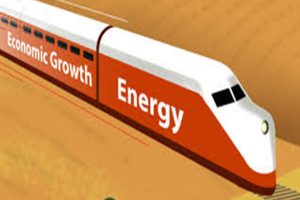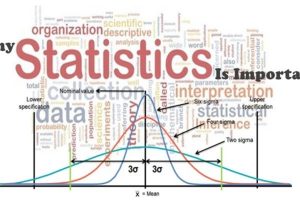
Africa is a continent well known for its rich reserve of mineral resources. However the continent is also known for its poor and struggling economy despite its rich potential for development. This is mainly because the continent had not devised the right policies and working mechanisms to reap the necessary benefit out of it.
Especially at the present global economic dynamics various opportunities that make the continent a decisive player are unfolding year on year. This is related to the continents possession of about 30% of the global reserve of critical minerals.
In recent years the world is highly worried about the burning issue of climate change which has become an imminent threat to the existence of life on earth. This global threat is mainly outcome of human’s use of unsafe or unclean sources of energy that are polluting the environment. Hence it is a vital topic of everyone to prevent the destruction of the environment by making a transition from the existing energy system to a safe and clean energy sources.
Such energy sources are principally obtained from hydropower, solar energy, nuclear energy and other renewable sources like battery. Especially the massive and cost effective production of rechargeable batteries is possible with the use of critical minerals. According to the United Nations University (UN) Critical minerals are subsets of minerals considered crucial for the manufacturing and technological needs of companies, industries, nations, or even the world. For example, rare earth elements are required for the production of permanent magnets used in wind turbines, while electricity networks need vast amounts of copper and aluminum. The definition of whether a mineral is considered critical or not is somewhat flexible, since this classification depends on not only the context and the stakeholder’s point of view, but is also subject to change over time because the current techno-socio-economic paradigm largely defines the criticality level of minerals.
It is good to critically look in to the state of Critical Mineral in the continent as they have the potential to determine its future. In deed as indicated by the American Geoscience Institute, critical minerals are mineral resources that are essential to the economy and whose supply may be disrupted. The ‘criticality’ of minerals changes with time as supply and society’s needs shift. Table salt, for example, was once a critical mineral. Today, many critical minerals are metals that are central to high-tech sectors. They include the rare earth elements and other metals such as lithium, indium, tellurium, gallium, and platinum group elements.
By definition, critical minerals are essential for society. Demand for critical minerals such as rare earth elements has increased in recent years with the spread of high-tech devices for personal and commercial use such as wind turbines, solar panels, and electronics such as smartphones and tablets.
With approximately 30% of the world’s mineral reserves, including cobalt, lithium, and nickel, which are considered essential for the green transition, African countries need to exploit these resources to drive its development, particularly trade and industrialization, experts say.
Recently, an Expert Group Meeting (EGM) on Africa’s Critical Minerals in the Context of Trade Policy hosted by the African Trade Policy Centre (ATPC) of the United Nations Economic Commission for Africa (ECA).
The Press Release obtained from UNECA indicates that the meeting highlighted that Africa already has the right strategies and policies in place to harness its mineral resources. However, what is missing is deliberate action to realize this potential as the continent risks losing the full benefits of these critical minerals to global investors.
Speaking at the opening of the EGM, ECA Deputy Executive Secretary, Antonio Pedro, stressed it was time for Africa to leverage its political and economic integration for development. The continent already has policies to promote the development of its mineral resources.
“There is no reason why we should have a repeat of the scramble for Africa, especially at a time when greater political and economic integration has also taken place at the regional and continental levels,” Mr. Pedro said, pointing that supportive continent-wide policies such as the African Mining Vision (AMV), the African Commodity Strategy and now the African Green Minerals Strategy have been adopted across Africa.
Research by the ECA shows that demand for critical minerals will drive the quest to decarbonize economies and to reach net-zero emissions by 2050. It is estimated that the transition from fossil fuels to clean energy will create demand for 3 billion tons of minerals and metals to deploy solar, wind, and geothermal energy by 2050. For example, the Democratic Republic of Congo alone supplies about 70% of the global cobalt market, a mineral critical in electric vehicle battery production.
Critical minerals, sought after for just energy transition, could power Africa’s development and sustainable future, according to United Nations Conference on Trade and Development (UNCTAD) which has identified critical minerals as a key revenue generator for governments to finance development and lift millions of Africans out of poverty.
Africa could be the go to industrialization destination by adding value to the critical minerals on the continent, argued Mr. Pedro. The value addition of critical minerals could boost e-mobility in Africa, while creating decent jobs and make Africa a competitive hub for green industrialization.
Africa is home to significant reserves of critical energy transition minerals such as 55% of cobalt, 47.65% of manganese, 21.6% of natural graphite, 5.9% of copper, 5.6% of nickel, 1% of lithium, and 0.6% of iron ore globally, according to UNCTAD.
Research shows that Africa is yet to fully realize the potential of its mineral resources as it estimated that African countries generate only about 40% of the revenue they could potentially collect from these resources.
The meeting noted that, the growing global demand for critical minerals is an opportunity for Africa to maximize its revenues from mineral exploitation, value addition and the development of minerals-based regional value chains to spur industrialization. This can be done through leveraging Africa’s trade and integration programme, including its Regional Economic Communities (RECs) and the African Continental Free Trade Area (AfCFTA).
The AfCFTA represents a market of 1.3 billion people and a combined GDP of over US$3.4 trillion but intra-African trade accounts for only 15% of the continent’s total trade.
The EGM considered the current demand for critical minerals in the broader historical and intellectual context of commodity dependence, examined Africa’s recent experiences dealing with commodities, and explored the role of Africa’s trade and integration policy to safeguard Africa’s interests internally and boost its negotiating power in its dealings with external partners.
The EGM which featured panels led by prominent experts and researchers from the African Union Commission, United Nations agencies, regional development banks, think tanks, and the private sector, drew a number of recommendations for action. It recommended that Africa’s commitment to trade-led economic integration should be leveraged to support the development of minerals-based regional and continental value chains and economic diversification.
BY STAFF REPORTER
THE ETHIOPIAN HERALD TUESDAY 24 DECEMBER 2024





